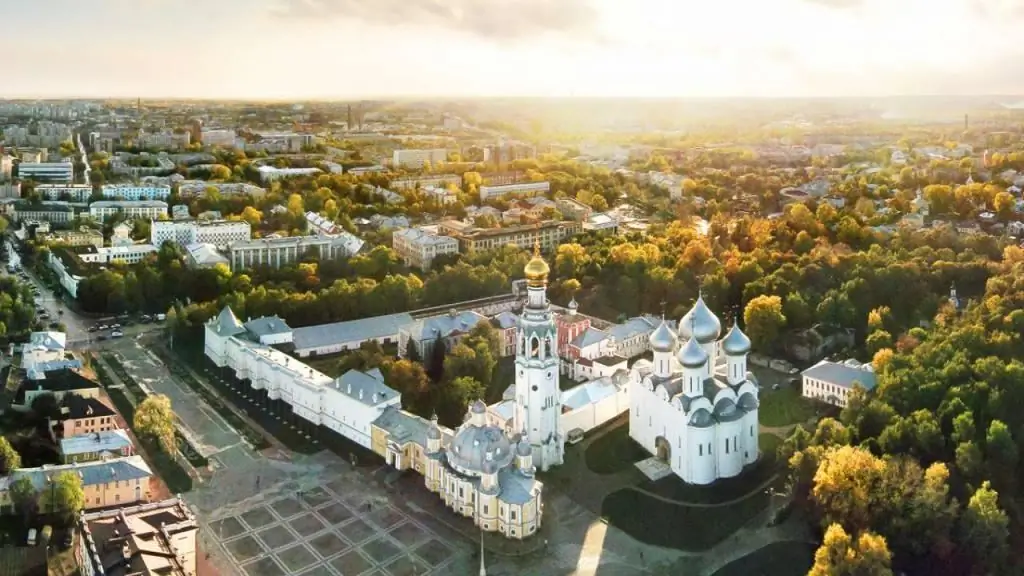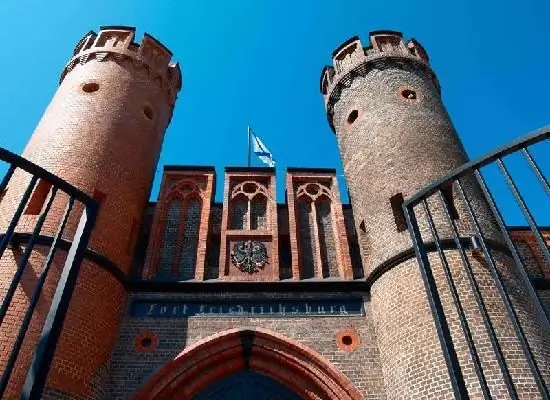- Author Harold Hamphrey [email protected].
- Public 2023-12-17 10:06.
- Last modified 2025-01-24 11:10.
Lovers of ancient architecture, fans of France and connoisseurs of history should not miss the opportunity to visit the Château de Vincennes - a palace that is unlike any other in Paris, but holds a lot of royal secrets. What is the difference between this architectural structure and the rest, many will ask. Compared to other French castles, so graceful and gentle in their manifestation, Vincennes, on the contrary, looks very gloomy, even menacing. No wonder, since he has a truly bleak history.

Location of the Château de Vincennes
The fortress is located in the suburbs of Paris, the village of Vincennes, which, in turn, is located 300 meters west of the Chateau de Vincennes metro station and 8 km southeast of the Cite Island. It is noteworthy that, unlike others, the Vincennes castle was built on a flat area. And the ditch, which served as a barrier to the entry of enemy forces, was filled with a stream, becausethere were no rivers nearby. During the Middle Ages, a forest grew on this place, so the fortress was surrounded on all sides by trees. It has practically not survived to this day.

Description of the castle
It is a massive fortress in the shape of an irregular rectangle, the donjon of which is erected in the form of a square with three round towers at the corners of the fortress walls, 6 m in diameter. All of them are equipped with a covered viewing gallery. Vincennes Castle is impregnable. This is a fortress with huge walls 3 meters thick and almost 12 meters high, fully corresponding to the donjon. And these dimensions are indicated without taking into account the depth of the moat. There are only 6 floors, but only 5 are considered, since the last one is very small in relation to the others. But on the other hand, a beautiful view of the surrounding territory opens from there.
Initially, the towers of the fortress walls were much higher, but later they were leveled. And it is in this form that the building has survived to the present. A kind of backbone of the donjon is a column that holds the vaults of all five floors. Relatively recently, she survived the reconstruction in order to strengthen, without which the structure threatened to collapse. It is assumed that there was once a painting on the inner walls of the fortress.

Château de Vincennes: history of occurrence
The "life" of the fortress begins with the construction of not the building that can be seen today, but a small hunting house, erected in the middle of the XII century by order of Louis VII (the Young). No wonder the kingchose this place, because in the Middle Ages there was a beautiful forest rich in game. Then a castle appeared, which happened already in the 13th century, when Philip Augustus and Louis Saint ruled. If you immerse yourself in history, you will find that it was from this fortress that the king of France set off on his last campaign - the Crusade, from which he never returned.
Closer to the XIV century, the Château de Vincennes was used as a venue for celebrations. For example, Philip III married here, and 10 years after him, in 1284, Philip IV. But not only solemn events were held here. In 1316, Louis X dies in the castle, after 6 years - Philip V, and after the same amount of time - Charles IV.
But the fortress is immortal. And already in 1337, King Philip IV gave an order on the need to strengthen it, for the purpose of which a donjon was built, subsequently protected by its walls. Born in the castle, Charles V (the Wise) settles there, making the building his own residence, in connection with which a powerful wall more than a kilometer long with six towers and three gates appears. But such a project could not be carried out quickly, and therefore the construction continued for 2 generations. Then the construction of his own Holy Chapel begins, and the next ruler, Louis XI, moves from the donjon to the building located in the fortress wall.
Louis XIV went even further - he ordered the architect to design 2 wings connected by the main courtyard. Both of them were decorated in the style of classicism, but one belonged to the queen, and the other to the king. Then the Vincennes castle (Paris) was the third most importantresidence, but already in 1670 the Sun King moved to Versailles. The fortress in Vincennes has lost its vocation.

The fate of the castle throughout its existence to the present day
Even when Louis XIV lived in the fortress, the donjon became a state prison, but not a simple one, but for prisoners of noble origin. Some of them were allowed to bring servants and wives with them to the castle, so the accommodation of the prisoners could be called more than comfortable. For example, the now well-known philosopher and poet Voltaire and the brawler Marquis de Sade were serving their sentences there.
When the Sun King moved to Versailles, the donjon continued to be a prison, even after a porcelain factory settled there in the 18th century. The hunting lodge, from which the history of this eventful place began, ceases to exist only in 1796, after the transformation of the castle into an arsenal. At that time, various military structures began to appear. By the way, they can still be seen today, as the buildings are well preserved and have not been destroyed.
In 1804, the moat of the fortress observes bloody events - in it, on the orders of Napoleon, the only son of Prince Condé from the Bourbon dynasty, the Duke of Enghien, was shot. And in 1917, the notorious Mata Hari said goodbye to her life at the same place. Today, the Vincennes Castle, the photo of which is shown in the article, is a museum open to everyone.

Château de Vincennes
Fromforests, once dense, only a small piece remained. In addition to the donjon, the Holy Chapel and military buildings, there are now research and archival centers on the territory:
- Department of Defense Historical Service.
- National Defense History Research Center.
- Inter-Ministerial Commission in charge of restoration work.
Château de Vincennes: how to get there?
The easiest way is the subway. The regional express metro is the Vincennes station, or the first branch of the Paris metro is the Chateau de Vincennes station. The feudal fortress, the residence of the French kings and the forest house is an architectural creation, unremarkable from the outside, but of great historical value. After all, more than one generation of the rulers of France during the Middle Ages was born, grew up, married and died here. Vincennes Castle, which tourists leave only admiring reviews, is really worth a visit no less than the Louvre or the Stade de France.






